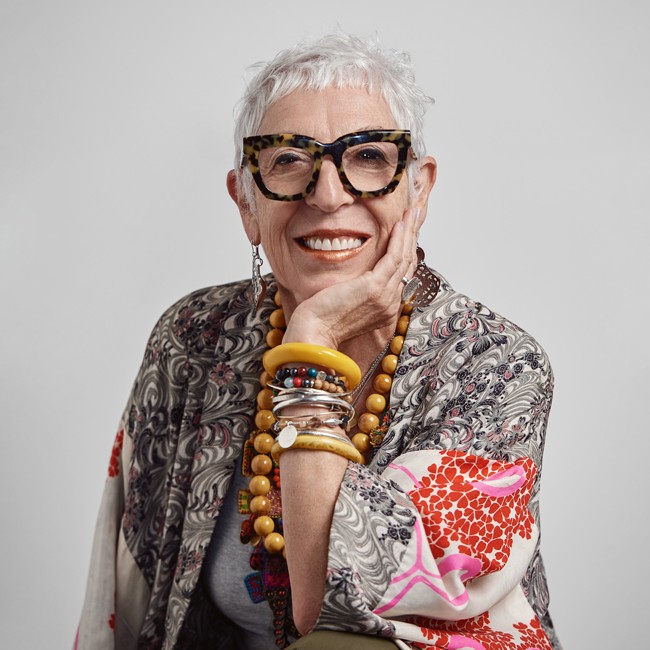What drives momentum when a board sets its course for digital transformation? Three boards at different development stages share their valuable lessons..
1. No time to waste
A new board appointee is helping take food rescue organisation OzHarvest to the next level.

In the not-for-profit sector, success often relies on the measurement of value. That’s why OzHarvest founder and CEO Ronni Kahn AO MAICD adopted digital technologies from day one. Data analytics help unlock support from food outlets and government programs. The bright yellow vans that divert surplus food from landfill to charities are tracked to inform drivers of ad hoc jobs or route changes.
But despite early digital adoptions, Kahn describes technology as being “tacked on in bits and pieces”. It’s time for an integrated approach, and fresh talent on the board will help steer the way.
Growth and evolution
From humble beginnings with just one van in Sydney in 2004, the OzHarvest fleet has grown to 65. It now works with more than 1400 charities and 3252 food donors across the country, including Qantas Airways, IHG Hotels & Resorts and supermarket giants Woolworths and Aldi. It has saved more than 62 million kilograms of food waste from landfill and has delivered almost 196 million meals.
As its operations have evolved, so too has its board.
“It’s always been based on a matrix of skills,” says Kahn. “Initially, I needed governance, risk and marketing. My early board reflected that. Obviously, governance and risk has remained important, but as we brought more technology into the business, the skills of the board didn’t really follow suit.”
That has changed with the recent board appointment of Cameron Adams, co-founder and chief product officer of Australian technology unicorn Canva. As of September 2021, Canva’s value reached $55 billion. Kahn says Adams’ position on the board will support OzHarvest’s digital growth and capability.
“Cameron will be leveraging his knowledge from the growth of his own business to help upskill both the board and the broader OzHarvest business,” she says. “We now have a much more broad-reaching scope around our technology.”
Scaling up to stay in the game
A 2020 survey by not-for-profit technology social enterprise Infoxchange found that while more than half of the 490 non-profits had introduced new technology as a result of the pandemic, 49 per cent were not confident in how they were using it.
This comes as no surprise to Kahn.
“I think it’s great that more than half have embraced technology, but unless they scale up digitally and start running like a business, they’ll be left behind,” she says.
At OzHarvest, business acumen is enhanced through strategic partnerships. Its digital integration, for instance, includes working closely with partner Woolworths on new technology to upgrade the quality of surplus food, as well as how and when it’s collected.
Kahn says the partnership was strengthened in late 2019, with the appointment to the board of Woolworths Food Company and Metro managing director Guy Brent MAICD.
“Bringing Guy on board has also helped OzHarvest to better understand Woolworths’ needs and for Woolworths to better understand our needs,” she says.
OzHarvest’s internal technology system is also being upgraded, thanks to a recent $600,000 grant to be spent over two years.
“I was asked by a private foundation to choose anything that nobody else would fund,” says Kahn. “I asked for IT integration to enhance our technological skills across the business.”
2. Banking on the future
With a revised strategy and a shake-up of the board, Bank of Queensland is well on its way to digital transformation.

When Patrick Allaway was appointed chairman of the board of Bank of Queensland (BoQ) in 2019, the performance of the 158-year- old institution was weighed down with legacy IT systems. Delays in digital uptake, lack of integration and a period of under-investment had contributed to a 14 per cent decline in the bank’s cash profit from the previous year.
Digital transformation was a key pillar of the revised strategy the bank released in early 2020. Over the next three years, $100 million will be spent annually on initiatives such as shifting to a cloud-based single platform, implementing a digital-first solution across the organisation and, as Allaway puts it, “catching up”. He describes digital transformation as “the competitive battleground of the future”. The question is whether the board is future-fit.
Shaking up the board
BoQ’s new strategy was accompanied by an independent board review that compared its existing skills base with the capabilities required to achieve the bank’s digital ambitions. “We had a lot of bankers on the board,” says Allaway. “But we were lacking in some key skills for our requirements going forward.”
A board refresh, completed in 2021, reduced its composition from 10 non-executive directors (in 2019) to seven, with six directors retiring and three new directors being appointed.
Along with governance and investment oversight, each new director brings core skills Allaway cites as vital to digital transformation.
Mickie Rosen has led global technology businesses and brings decades of strategy and board experience. Dr Jenny Fagg GAICD, who most recently served as chief risk officer at AMP Limited, has strong defence and risk management capabilities. Deborah Kiers MAICD, a former chair of the ME Bank board’s people and culture subcommittee, brings expertise in organisational design and culture.
“The bank has been a rules-based organisation because of compliance and regulatory requirements,” says Allaway. “But as you think about transformation, you want to experiment. You want people to speak out. You want to empower them to make mistakes, and to learn from them.
“Rules are still very important to us, but we’re shifting our organisational structure to be much flatter, and we’re looking to bring digital natives and engineers to the organisation.”
Developing digital smarts
Upskilling existing board members has also been a priority. The board’s technology committee has been rebranded as the “transformation and IT” committee, with Rosen as chairman.
“All of our directors sit on that committee,” says Allaway. “We want to ensure that all of our directors are fully informed on the program and the progress.”
MIT Sloan is delivering education sessions with a focus on digital literacy, emerging trends and the governance and discipline needed to execute large- scale technology projects.
“We need to ensure we have clarity around objectives and key performance indicators because these are generally multi-year projects that require ongoing monitoring and a consistent approach from the board and the senior management team,” says Allaway. “Those KPIs... must be transparent and dynamic. The board’s role is holding management to account to deliver that while providing important questions, input, governance and oversight.”
3. Driving innovation
Royal Automobile Club of Western Australia’s digital strategy puts the customer at the centre of its operations.

It’s easy to get swept up in the hype of a new multimillion-dollar technology system, but Royal Automobile Club of Western Australia (RAC WA) looks beyond the buzz.
“Technology is the ticket that gets you into the arena to compete,” says its CEO and board director Rob Slocombe MAICD. “It’s the way you use it that transforms your organisation, so you need to make sure that the board is on that journey of technology as the enabler, not the outcome.”
It’s a journey that started in 2007 for the now 116-year-old motoring club and organisation. Faced with challenges posed by rapidly changing technology, demographics and consumer preferences, the club developed a new strategy for the future.
“We recognised that if we wanted to become a more member- centred organisation, we needed to realign ourselves across our organisation,” says Slocombe, who became CEO in 2019, five years after joining.
“When I came on in 2014, I prosecuted an IT strategy that was all about remediating the sins of the past to get us to a place where we could invest in the future,” he says. “As time progresses, you finesse your strategy to better suit your circumstances.”
That latest evolution is called “Run, Grow and Transform” and focuses on performance, diversification and alignment of processes and technology systems.
This includes moving from disparate, customised systems between product lines to a common IT platform across the organisation.
“Customisation makes upgrades really difficult,” says Slocombe. “You have all this stuff that some clever technology person knew all about in 1985, but never bothered writing a book on. Going to a common platform creates a single view of the customer.”
Along for the ride
The challenge of digital transformation is “taking the board with you,” Slocombe says. “It’s been good for us to recognise that a board may not have the skill set required to look at some of these technology challenges — or the time in the regular scheduled board meetings to devote to some of the technology questions.”
At the end of 2014, the RAC WA Board IT Committee was developed with the aim of providing thorough governance analysis of IT strategies and offering direction to management. Four of the board’s seven members are part of the committee.
“The committee can meet whenever required,” says Slocombe. “In its first 12 months, it met about 14 times, as we brought in things like external audits of our IT capability, particular pieces of a business case, or addressed issues in our data collection. It’s a fantastic opportunity to have a clear dialogue and direction, and the main board also likes it because they can delegate approval to the IT committee, who do a 360-degree inquiry and analysis.”
Partnership between board directors and management has been vital to RAC WA’s digital transformation. “Very functional boards discuss things with management,” says Slocombe. “They don’t just receive reports and provide resolutions. I’m not only the CEO, I’m also a director, which means it’s not a master-slave relationship between the board and management. We complement each other’s skills.”
Latest news
Already a member?
Login to view this content



